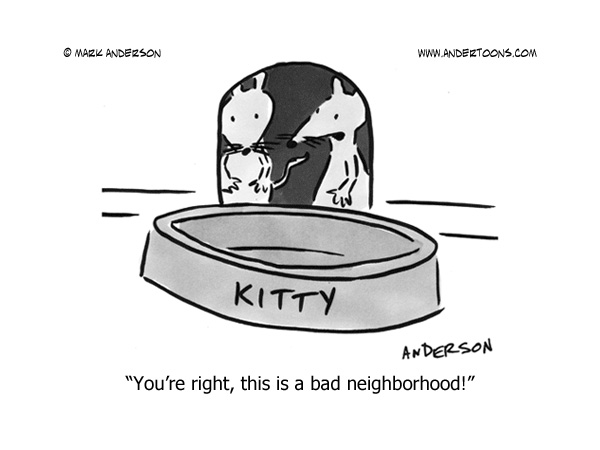For commercial building tenants and owners, energy efficiency is a growing priority; however, the process by which to improve energy efficiency does not always present immediate practical benefit.
Barbara Vergetis Lundin captures our attention in Fierce Energy, an industry magazine exploring energy trends, challenges, and current events, with this article describing how the typical owner-tenant relationship often discourages the pursuit of greater energy efficiency:
Traditionally, building energy efficiency has been blocked by a ‘split incentive’ issue. If the tenants pay the energy bills, the landlord has little incentive to invest in efficient equipment. At the same time, the tenant does not own the energy-using systems of the building, and, thus, has no incentive (or ability) to invest in efficiency upgrades. The result: neither party takes the initiative to make improvements, limiting the uptake of energy-efficiency solutions.
This stalemate is problematic, and begs the question: How do we encourage greater energy efficiency initiatives among commercial owners and tenants?
Green Leases, Greener Businesses
A solution to this challenge has in the past few years begun to take shape in the form of green leases, a growing tool in a “green building” movement. In simple terms, a green lease is a commercial lease used to incentivize green building and sustainability initiatives for both owner and tenant. Its intent is to minimize the barriers to both parties striving for greater energy efficiency within a commercial leasing arrangement by establishing a contractual commitment for the building’s systems and its operations.
For example, a green lease might include specifications for green cleaning requirements, which identify within the lease agreement what materials and procedures must be used by the tenant to satisfy a building’s sustainability requirements. Similarly, a green lease might also include provisions for energy usage, which might stipulate energy consumption thresholds that the tenant must reimburse the landlord for in the event that he or she exceeds them.
In general, the goal of green leases is to encourage improved energy and resource consumption while making it financially sustainable for both parties. Coy Davidson, Senior Vice President of Office and Health Care Services at Colliers International, describes a number of other notable incentives of a green lease:
A green office lease encourages landlords to compete for tenants by designing, building, renovating, and managing sustainable buildings while maximizing the landlord’s return on investment primarily based on the reduction of operating costs.
By encouraging a proactive approach to energy efficiency, green leases are an innovative way of improving the environmental sustainability of small- and medium-sized businesses.
Lundin points to an initiative in Cleveland, Ohio led by the Council of Smaller Enterprises (COSE), as an example of how these leases can drive commercial energy efficiency improvements. Behind the initiative, according to Lundin, is the idea of connecting “owners and tenants on smart commercial lease solutions that equally align the costs and benefits of energy-efficiency investments between the parties.”
Low-Risk, High-Reward
The Cleveland-based program is just one example of how a green leasing encourages a collaborative framework for the pursuit of energy efficient alternatives between owners and tenants. It has been found to help:
- realign incentives;
- facilitate information sharing;
- improve environmental performance by outlining specific commitments for both landlord and tenant;
- encourage owners and tenants to collaborate on both energy efficiency and resource use; and
- improve environmental data reporting so that established goals can be measured and evaluated.
Even in their infancy, green leases are a promising step towards broader efficiency improvements. The movement has also been recognized globally. According to Lundin, “The United Nations Environment Program Finance Initiatives lists green leasing as [key] to unlocking energy-efficiency improvements.”
And while the arrangement might seem complicated, as Meaghan Farrell writes for Green Biz Magazine, it need not be an extraordinary burden. “Often, [a green lease] merely requires structuring terms and agreements already in place,” says Farrell, “such as temperature settings and building operating hours, in a fashion that provides sustainable cost savings.”
Green leases do, of course, require careful and strategic thinking on the part of those involved, but they aren’t as complex as they might sound, and often they yield better returns than we anticipate; in her article, Farrell describes a number of benefits that green leasing enables, obvious and otherwise.
With little risk involved, and the potential for immediate practical returns, green leases have plenty going for them. So when we get right to it, the question really shouldn’t be “Should I explore green leasing arrangements?” but instead “Why wouldn’t I?”
About The Author

-
Serial Entrepreneur, Technologist and Inventor.
My objective is to develop useful products that have a net positive effect in the lives of those that use them and the environment that we live in.
CEO of Mission LED Lighting Company Ltd.
- 2017.05.24LED factsWhy Are Cars Switching to LEDs if They’re Too Bright?
- 2017.05.09Be green & saveHow to Easily Replace T8 Fluorescent Tubes With LED
- 2017.03.07Build a better future7 Things About Explosion Proof LED Lighting You Should Know
- 2017.02.28Be green & saveWhy We Love LED Grow Lights (And You Should, Too!)





Leave a Reply